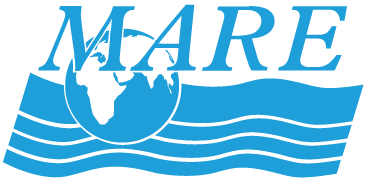Kindergarten–Ponds
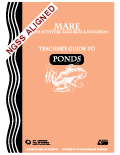
New: NGSS Aligned! Download FREE
Download the Ponds Teacher Guides Now
Curriculum Overview
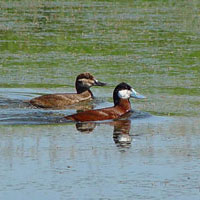
The Next Generation Science Standards (NGSS) ask Kindergarten students to develop an understanding of what plants and animals need to live and grow, how humans may affect the world around them, and how we can engineer solutions to protect habitats so that animals’ and plants’ needs are still met. To deepen students’ understanding of these ideas and their understanding of how science works, NGSS asks students to apply the crosscutting concepts of patterns, cause and effect, and systems and system models as well as the science and engineering practices of analyzing and interpreting data, engaging in argument from evidence, asking questions and defining problems, developing and using models, and obtaining, evaluating and communicating information.
The MARE Kindergarten Ponds curriculum addresses the NGSS as well as Common Core State Standards for ELA and Math by having students explore real ponds, build, maintain, and investigate a desktop model pond in the classroom, research and share information about pond organisms, as well as engineer some solutions to environmental issues that may impact pond organisms occurring in their own schoolyard.
Download a curriculum overview, NGSS, Common Core, and ocean literacy correlations (PDF, 252KB). Each session is 45–60 minutes long. The brief descriptions below will provide a sense of the Ponds activities.
Investigation 1: Desktop Model Ponds
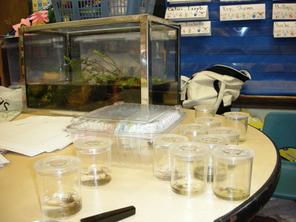
In the first 11 sessions students set up “model ponds.” Unlike the clean, filtered aquariums students may have at home, these systems are mini “habitats,” that simulate a natural system. As organic waste helps to create the environmental conditions necessary for the growth of bacteria and algae, students build the ponds, adding plants, worms, snails, and fish, one at a time. Each small tank becomes a laboratory for observing nature’s processes—especially how certain pond organisms interact with each other and how their basic needs are met within their habitat. As students study their model ponds, they learn a lot about how real scientists “do” science.
Investigation 2: Build a Paper Pond Model
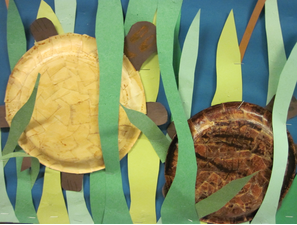
In Sessions 12–14 students build a paper model of a pond, which allows them to learn more about the pond animals that would not fit in their desktop model ponds in the first 11 sessions. Each small group of students makes a 3-D model of two organisms and takes responsibility for becoming expert on those organisms (plants and animals)—learning what the pond animals eat, what they use for shelter, whether they breathe air or breathe underwater and other special needs that must be met by their habitat. The groups use this information to determine where the animal might live within the pond habitat so that all of its needs are met (food, water, air, shelter, space). Groups then place their 3-D model plants and animals in the class paper pond and explain why they are placing them where they are—based on the plant or animal’s needs. The teacher summarizes learning by revisiting learning from the beginning of the unit—that all animals live where their needs are met, and that a habitat is a home that meets the needs of the animals living there; also that plants need water and light to live and grow. Through a class sort of what different pond animals eat, students also generate the key concept that some pond animals get their food from plants, some from animals, and some from both.
Investigation 3: Adopt a Playground
In Sessions 15–19 students learn how litter from the land may end up in a pond, lake, river, or the ocean and effect the animals living in those habitats. They also learn why people create so much trash and ways to cut down on their own waste. They then look for litter in their schoolyard and identify patterns of where litter is found. The class collaboratively forms hypotheses about why there is litter in the schoolyard. They then survey other students and teachers to find out which of their hypotheses might be the most likely cause of the problem. After creating a bar graph of their results to identify the likely cause, the class generates some possible solutions to the litter problem and writes a persuasive essay to the principal to use one of their solutions to solve the school’s litter problem. The unit concludes with students storyboarding cause and effect flow chains that demonstrate how things people do to live comfortably can affect pond and ocean animals and that people can also design solutions to those problems to take better care of animals living in those habitats.
Knowing Ponds
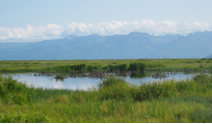
Just like in a tidepool, life in a pond is “living on the edge.” Ponds are pockets of water bounded by land. Lots of pond dwellers spend their time entirely in the water, but quite a diversity of life can be found along the boundaries between water and air and water and land. Each living thing—fish, snail, lily pad, frog, water strider, or turtle—is interconnected and has its needs uniquely met within this freshwater habitat.
Developed thanks to a generous grant from the California Coastal Commission.

